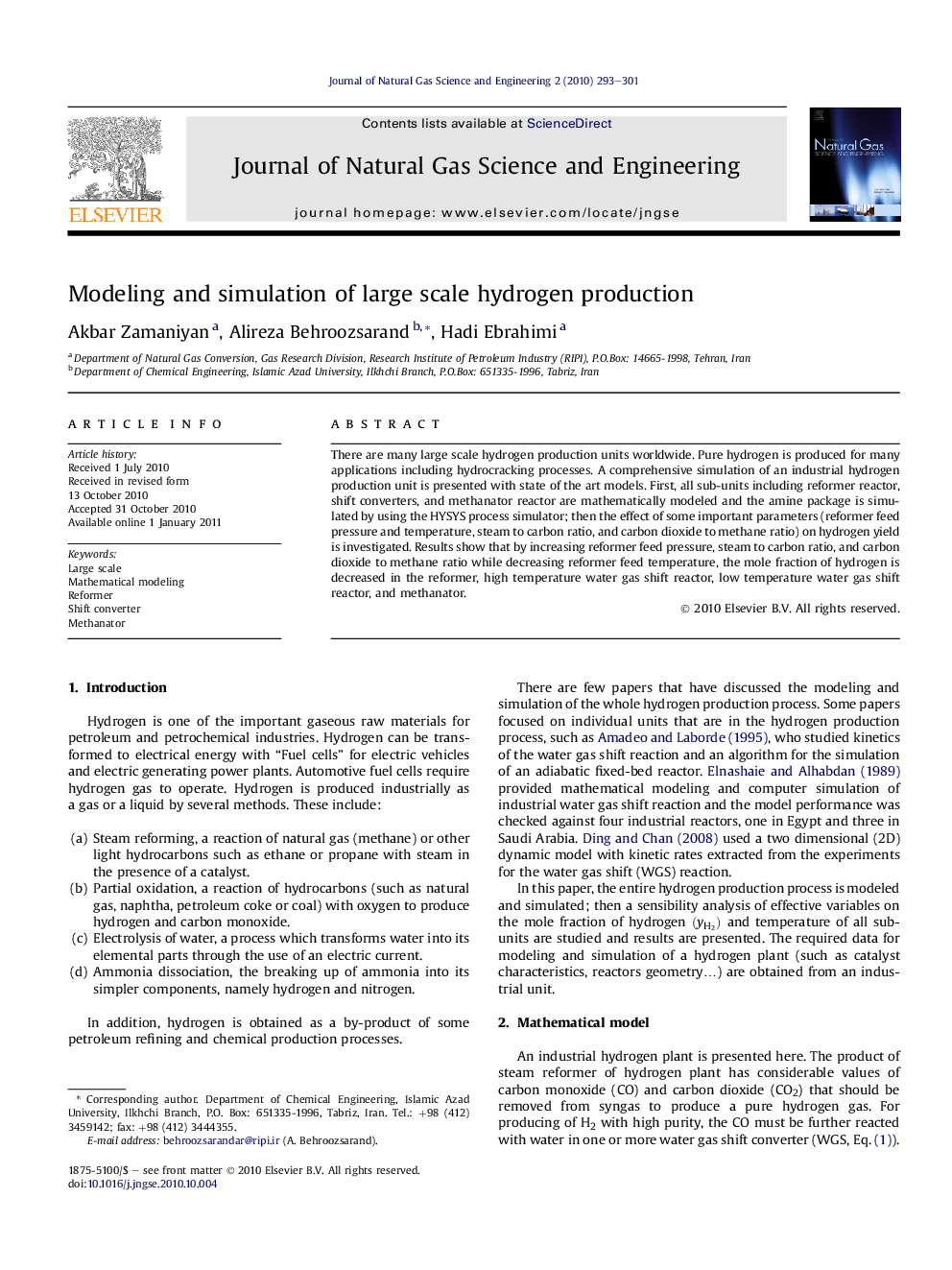| Article ID | Journal | Published Year | Pages | File Type |
|---|---|---|---|---|
| 1758207 | Journal of Natural Gas Science and Engineering | 2010 | 9 Pages |
There are many large scale hydrogen production units worldwide. Pure hydrogen is produced for many applications including hydrocracking processes. A comprehensive simulation of an industrial hydrogen production unit is presented with state of the art models. First, all sub-units including reformer reactor, shift converters, and methanator reactor are mathematically modeled and the amine package is simulated by using the HYSYS process simulator; then the effect of some important parameters (reformer feed pressure and temperature, steam to carbon ratio, and carbon dioxide to methane ratio) on hydrogen yield is investigated. Results show that by increasing reformer feed pressure, steam to carbon ratio, and carbon dioxide to methane ratio while decreasing reformer feed temperature, the mole fraction of hydrogen is decreased in the reformer, high temperature water gas shift reactor, low temperature water gas shift reactor, and methanator.
Graphical abstractFigure optionsDownload full-size imageDownload high-quality image (79 K)Download as PowerPoint slideResearch highlights► An industrial hydrogen plant has several main sub-units such as reformer, high temperature shift converter, low temperature shift converter, methanator, and Amine unit. ► All individual units (Steam reformer (SR), HTS reactor, and LTS reactor) in the hydrogen production process are modeled mathematically. ► Four parameters: pressure, temperature, steam to carbon ratio (S/C) and carbon dioxide to methane (CO2/CH4) molar ratio of the feed to the steam reformer were studied to determine their effect on the process.
